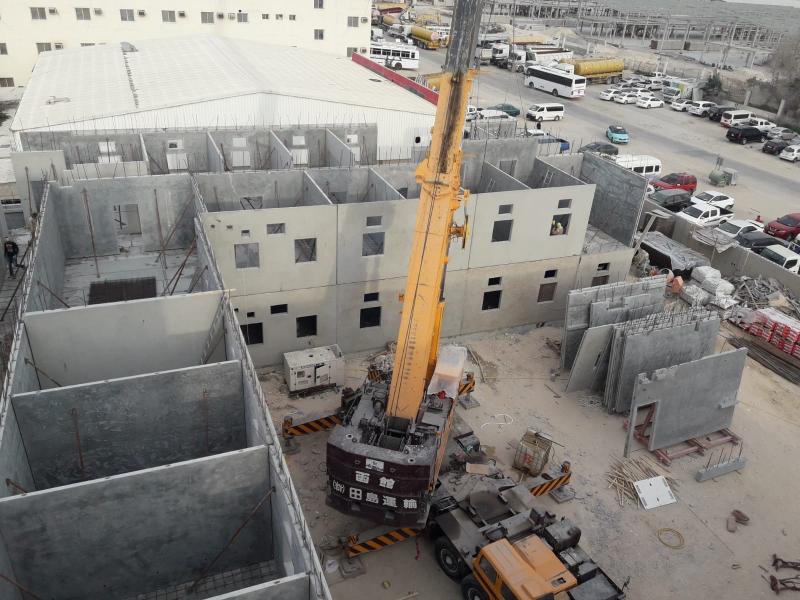Precast concrete elements are designed and produced in precaster factory. After demolding, it will be transported and craned into position & erected on-site. It offers durable, flexible solutions for floors, walls and even roofs in every type of domestic construction from individual cottages to multi-storey apartments. Concrete’s high initial embodied energy can be offset by its extended life cycle (up to 100 years) and high potential for reuse and relocation. Common production methods include tilt-up (poured on site) and precast (poured off site and transported to site). Each method has advantages and disadvantages and choice is determined by site access, availability of local precasting facilities, required finishes and design demands.
The advantages of precast concrete include:
- speed of construction
- reliable supply — made in purpose-built factories and not weather affected
- high level performance in thermal comfort, durability, acoustic separation, and resistance to fire and flood
- inherent strength and structural capacity able to meet engineering design standards for housing ranging from individual cottages to multi-storey apartments
- highly flexible in form, shape and available finishes, benefits from various molds table with shuttering magnets.
- ability to incorporate services such as electrical and plumbing in precast elements
- high structural efficiency, low wastage rates on site
- minimal waste, as most waste in the factory is recycled
- safer sites from less clutter
- ability to incorporate waste materials such as fly ash
- high thermal mass, providing energy cost saving benefits
- simply designed for deconstruction, reuse or recycling.
Precast concrete does have disadvantages:
- Each panel variation (especially openings, bracing inserts and lifting inserts) calls for complex, specialised engineering design.
- It is often more expensive than alternatives (can be offset by reduced construction times, earlier access by following trades, and simplified finishing and services installation).
- Building services (power, water and gas outlets; conduits and pipes) must be accurately cast in and are difficult to add or alter later. This requires detailed planning and layout at design stage when plumbing and electrical trades are not usually involved.
- Erection requires specialised equipment and trades.
- High level site access and manoeuvring room for large floats and cranes free of overhead cables and trees is essential.
- Panel connection and layout for lateral bracing requires detailed design.
- Temporary bracing requires floor and wall inserts that have to be repaired later.
- Detailed accurate design and pre-pour placement of building services, roof connections and tie-down are essential.
- Cast-in services are inaccessible and more difficult to upgrade.
- It has high embodied energy.
Post time: Apr-08-2021
